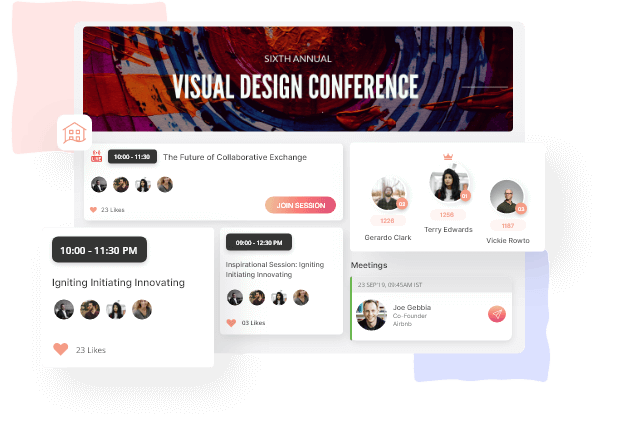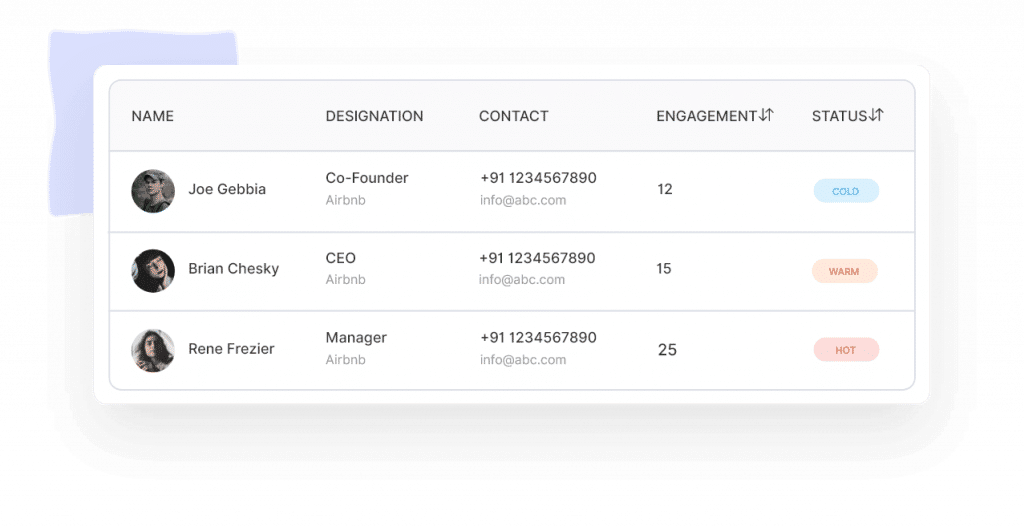Webinar and video conferencing software are the obvious beneficiaries of the ongoing pandemic. But another category that has seen a tremendous increase is virtual events software. The fact that people can’t meet each other to share knowledge, discuss their opinions and more doesn’t mean that the conferences, events, workshops, and more can’t shift online. One such company that’s betting on the virtual events not just amidst the COVID-19 crisis, but for the future too is Hubilo. We interacted over email with its founder and CEO Vaibhav Jain about his journey, the company’s evolution, and what the future of events may look like.
PS: The interview has been edited for the sake of brevity.

Table of Contents
1) Before we begin talking about Hubilo, our readers would love to know your journey into the world of SaaS?
My journey in the world of SaaS started back in 2014, when I decided to enter the Event-Tech space and develop a SaaS-based product to facilitate networking during physical events. After attending a few events, I realized that networking is the most important part of any event. Not just that, one’s life can be on a different track depending on who they meet and network with during events.
Related read: Top SaaS conferences and events in 2020
That insight led to the launch of Hubilo. Over the past six years, our team has successfully served more than 2,500 events. This was before we pivoted to Hubilo virtual in 2020. The new product was created within a few weeks, and it’s the need of the hour for most of the enterprises that have events as a part of their marketing strategy.
2) Hubilo started as an offline event company, so was it just the pandemic that led you to the launch of the virtual conference software or you were working on it behind the scenes as well?
Bringing the offline networking experience to online events was always the plan. However, we were only moving at the pace our audience was wanting to adopt. It was only after the pandemic that the requirement became so urgent that we had to pivot and provide that offering if we had to survive. It was only because we knew what our clients would want and were looking for that we could build this product in such a short period. This also helped us gain the lead in the market keeping the client’s use case in the center.
3) What’s the current user base of Hubilo? Which are your biggest markets?
In the past 6 months, we have served more than 300 clients who have hosted more than 450 events. In terms of attendees, some of the events hosted on our platform has as many as 50k attendees.

Our target is mid-market SMB’s and large enterprises. In terms Hubilo’s biggest markets, US and Europe would be on the top.
4) What are the biggest differences between online conferences and offline ones, and how’s Hubilo planning to reduce the gap?
Offline conferences required physical space, required people to travel from different parts of the world, and required huge budgets and operational procedures. Online Conferences in comparison, offer the convenience of joining in a conference from being present anywhere in the world, without having to travel, or spend thousands of dollars on booking physical venues, etc.
Hubilo is taking conferences/and other sorts of large events online by fulfilling and addressing all those problems that arise while hosting online conferences.
5) Virtual conference software category has suddenly become hot and that also means that it has a lot of players – established ones as well as new-age companies. How does Hubilo stand out from the competition?

Not every player who’s in the meeting space is a competitor. We feel there are only two or three companies who are direct competition for us. We are working on a positioning that is more on the B2B tool for CMO’s, event organizers who are responsible for events at enterprises, and SMB’s, rather than being a product that can be used for hosting small-time events. Ultimately, what differentiates us is the robustness of our product, which is capable of handling large-scale events with ease.
6) What does the future look like for Hubilo? Can you share some of the features that you’ve been working on?
We are building a lot of new features, but a few that I can share with you are:
1. Ability to have instant meetings
2. Emoji-linked experiences
3. PIP mode to allow people to explore other things on the platform while continuing the conversation
4. Multiple skins to customize the look and feel as per one’s preferences
5. Sponsored ads to allow conference organizers to offer more placement opportunities to their sponsors
6. Broadcast studio to offer better quality control
7. Multi-event analytics to provide at-a-glance view of all the events
7) Speaking of the future, how do you think the world of conferences will change post-COVID-19? Are online conferences here to stay, or we’ll see people craving for physical connections with offline events?
Physical events will definitely come back post pandemic and once it’s safe to do so. But the truth is that virtual and online events will always be a part of the physical events. In some ways, they are a game changer as the benefits they bring in terms of convenience and cost effectiveness are enormous, allowing companies to have events more frequently without worrying about cost implications.

I would relate this to the offline advertisement dollar shift to online that happened back when social media started picking up and became the go=to place for ad spends. Something similar is happening with the advent of virtual events. Huge returns are expected in terms of increasing event marketing budgets and all enterprises would drive this change. We envision Hubilo playing the role of that medium they would use to do so.
8) What are your favorite SaaS products out there?
SaaS has come a long way over the years, and I and my team use a lot of products. My favorite tools are Calendly, making it easier to schedule meetings, and Canva, which is a great way to design graphics without spending too much effort.






